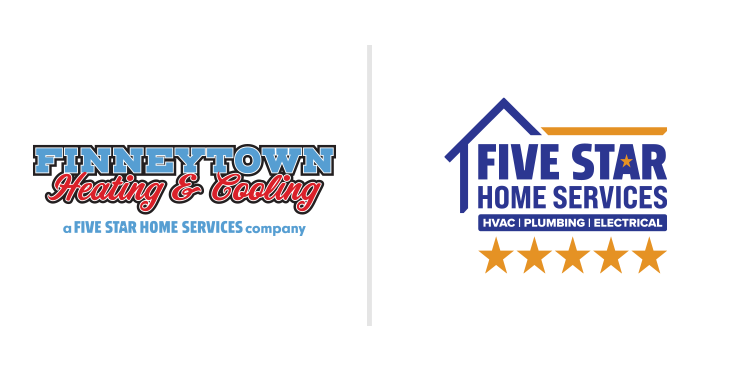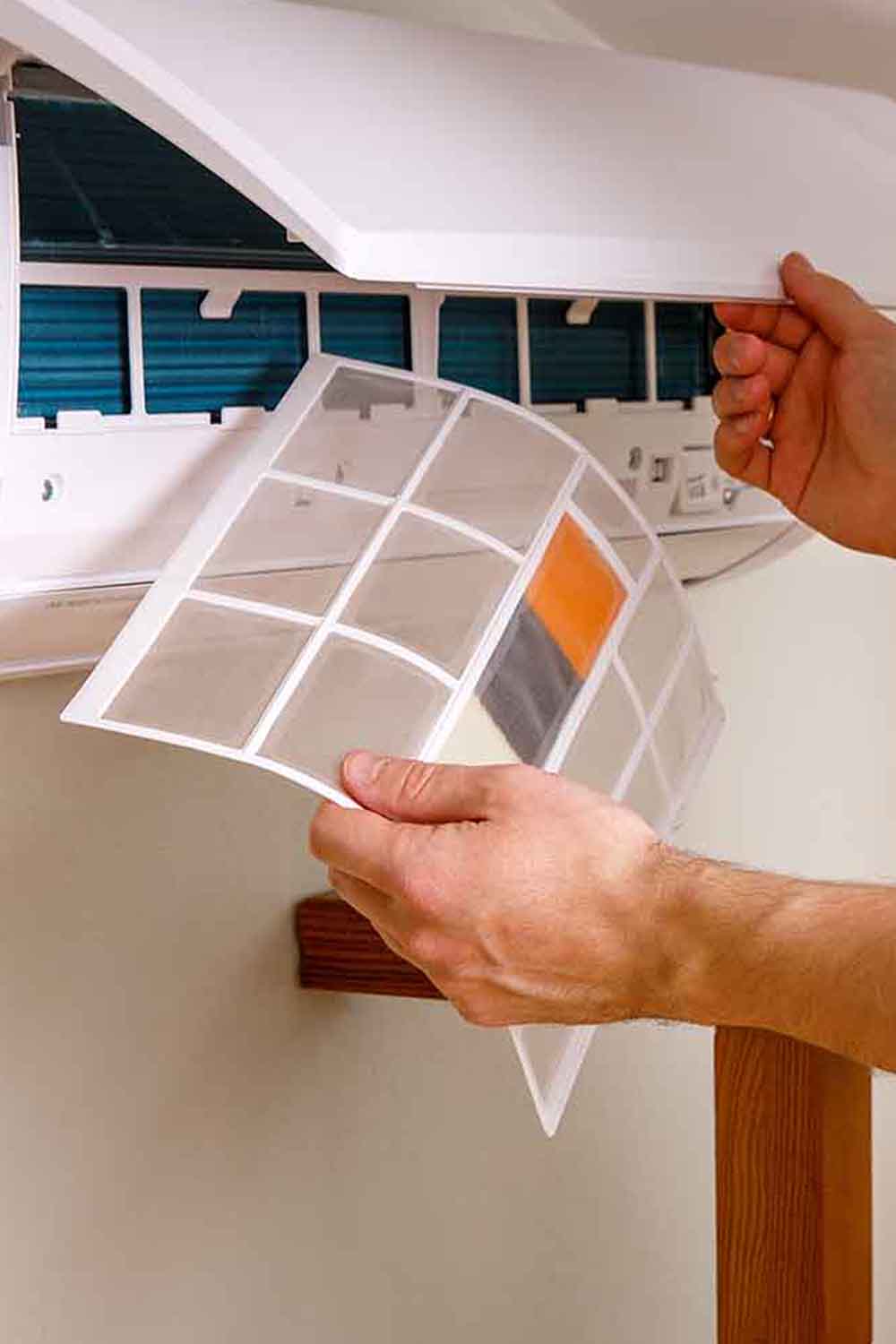Finneytown Air Filters
Quality Air Filters in Finneytown, OH
Looking to improve air quality and improve air filtration by up to seven times? Check out our deeply-pleated media filters! Air filtration is essential in any residential dwelling, and media filters are especially helpful if you have multiple people living in the home, animals or anything in your home that might negatively affect your air quality. In addition to increasing the lifespan of your heating and cooling systems and improving your home’s indoor air quality, media filters help decrease wear and tear on HVAC equipment, making repairs less frequent. Finneytown Heating & Cooling is committed to providing homeowners in the Greater Cincinnati Metro area and Greater Dayton area with superior home comfort in addition to clean and healthy indoor air quality for all.
Media filters are made of paper-like material that is proven to be seven times more effective than the standard air filter. Upgrading to a pleated media filter will cleanse the air of everything from insecticide dust to flu viruses. Media air cleaners are cabinets homeowners use to drastically improve their air quality. These cabinets are installed in the return air duct of a forced air system. Media air cleaners are an HVAC system’s first line of defense and best line of defense to purify the air supply. They do an amazing job at cleaning the home’s air and are essentially a higher-grade, higher quality air filter that many of our customers feel are well worth the small cost. As their name indicates, these “air cleaners” capture and remove all kinds of tiny invisible airborne particles and pollutants in your air.
What is Indoor Air Quality?
A home’s air quality is something crucial that all-too-often gets neglected or overlooked in a lot of modern dwellings. While many people believe air pollution is primarily an outdoor phenomenon, studies indicate this is actually false. It turns out the air inside a lot of modern dwellings and workplaces is far more polluted than the air outside, even in bigger cities and metropolitan areas. Because the average American spends more than 21 hours a day inside on average, this whole area of residential air quality deserves serious attention. Because the air indoors often lacks proper filtration, indoor air quality is something customers need to be taking seriously.
The EPA defines Indoor Air Quality as the quality of air inside a building or home and how it relates to the people inside the building or home. Typically, a homeowner’s Indoor Air Quality has a very real and sometimes profoundly negative effect on the occupants health in addition to everyone’s overall well-being, mood and energy levels.
Why is Our Indoor Air Quality So Important?
Because the majority of Ohioans spend the majority of their time inside, residential air quality has far more of an impact on them than most people realize. If the quality of air in a residence is poor or the quality is insufficient, it tends to have negative impacts on everyone’s health in addition to it being bad for the home itself. Experts say air quality levels in a lot of modern homes can be anywhere from 2 to 5 times as polluted or toxic as the air outside, where Mother Nature has a wide range of ways it cleans and purifies the air, recycling it. When you realize how tightly insulated almost all modern homes and buildings are built, it’s clear why professionals urge homeowners to consider certain indoor air quality products and air-filtration solutions to be used in conjunction with their HVAC equipment.
Because buildings are sealed airtight, any indoor pollution gets trapped inside and recirculated in the absence of proper filtration and ventilation. Then, on top of that, there can also be issues with humidity, mold and mildew. More often than not, the use of an air filtration device or a dehumidifier or humidifier or air purifier goes a long way to improve air quality when used in conjunction with a heating or cooling system. Additionally, UV Lights and other air filtration products can benefit a homeowner in a host of ways. If air quality is poor, short-term health implications can surface after a single exposure, or multiple times being exposed. Those short-term symptoms can irritate the nose, the eyes, the throat, and the skin. Or, it can cause fatigue, dizziness and headaches.
Replace Your Media Filter Frame Box in Five Steps
#1
Step 1
Remove the entire media filter frame box from your HVAC. However, before doing this, make sure you turn off all power to your HVAC system. Doing so is safe and also makes sure that you don’t get particles or dust in the system if it were to kick on while you were replacing the media.
#2
Step 2
Check to find the four tabs on the filter frame box. Switch these to open up, permitting the sides of the frame to go down. This will give you access to the media for removal.
#3
Step 3
From there, the old media easily comes out and can be thrown away.Due to their design, these are much easier to get rid of because they aren’t as bulky, and you can fold them up and throw them away.
#4
Step 4
Uncoil the new media so you can insert it into the filter frame. The end of the new media with cardboard should fit snugly into the first channel on the filter frame. Matching the old media, place one fold per base on the filter frame box. After this, there are only two accordion filters that fit several different frames. Because of this, you might have more folds than you do channels. If you do, it’s not a problem. If you have extras, you can bunch up any extra folds into one channel. It’ll still work fine.
#4
Step 5
Once you have inserted all the folds, lift the sides of the box so you’re able to reattach to the new media. Flip the tabs back in place to secure the media. When this is done, you’ve successfully replaced your media!
The Difference Between Standard Air Filters & Media Filter
The biggest difference between the standard air filter on an HVAC system and a media filter is the size and their effectiveness. Standard or conventional filters are about an inch thick, while media cleaners are four to five inches thick making them far more effective.
The conventional air filter is made from a material that’s loosely woven spun-glass fibers. Most homes that have forced-air HVAC units use this standard furnace filter. For this most part, it’s only meant to keep the HVAC system and its ductwork clean and that’s about all. Because of their low level of efficacy, conventional air filters don’t do anything to improve indoor air quality. Homeowners who want to improve their indoor air quality or who have air quality problems really should consider having a media filter. The cabinet for these air cleaners is situated between the main return duct and the blower cabinet. They use an effective deeply pleated, paper-like material that is seven times better than the conventional filter at removing dust and other particles from the air in the home. If you have the standard HVAC air filter, it needs to be checked regularly and replaced. In any case, you should understand that upgrading to a pleated media filter will improve your household air of everything from pollutants and dust to flu viruses and other microscopic particles.






